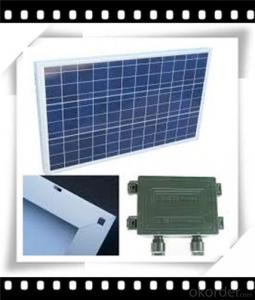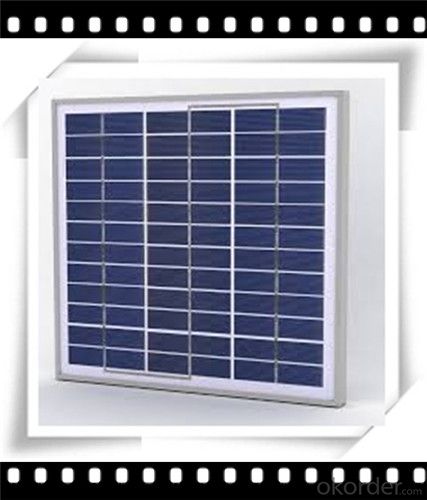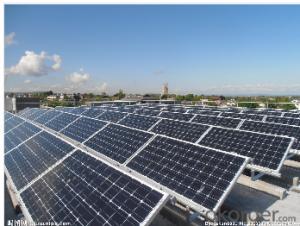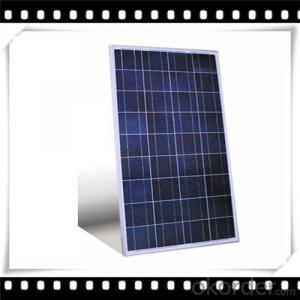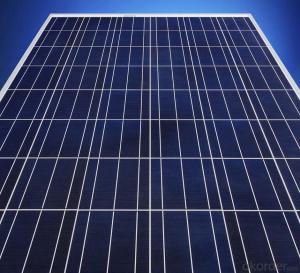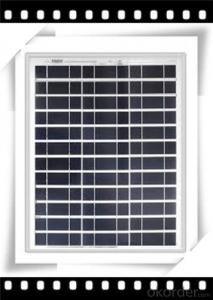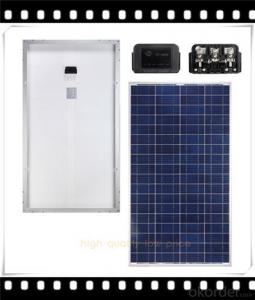30w Poly Solar Panel Mini Solar Panel Newest Solar Panel CNBM - Solar Panels in Trees
- Loading Port:
- Qingdao
- Payment Terms:
- TT OR LC
- Min Order Qty:
- 10 set
- Supply Capability:
- 300000 set/month
OKorder Service Pledge
OKorder Financial Service
You Might Also Like
Polycrystalline Solar Modules
CNBM offers a range of small, medium and large polycrystalline solar modules, designed for a range of requirements.
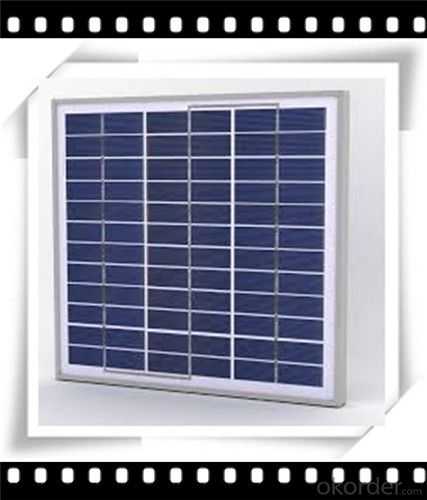
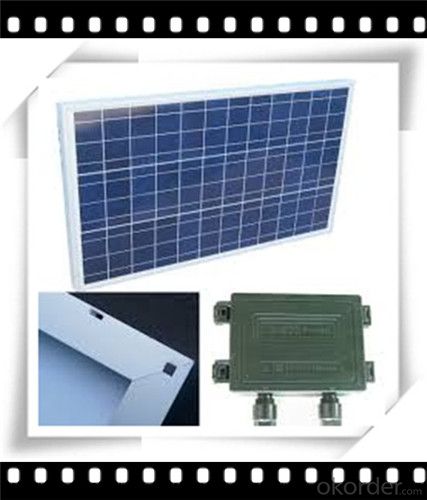
Specifications:
+/-3% |
Polycrystalline silicon solar cells (156 x 156mm) |
60 (10 x 6) |
1650 x 990 x 40 |
25.5 |
Limits:
Operating Temperature | -40~+85? |
Storage Temperature | -40~+85? |
Maximum System Voltage | 1000 VDC max. |
Hail Impact | Diameter of 28mm with impact speed |
Temperature and Coefficients:
NOCT | 48C+/-2? |
Voltage temperature coefficient (%/K) | -0.35 |
Current temperature coefficient (%/K) | 0.05 |
Power temperature coefficient (%/K) | -0.45 |
Characteristics:
Model: | SGM-200P | SGM-210P | SGM-220P |
Max-power voltage Vmp (V) | 29.2 | 29.4 | 29.41 |
Max-power current Imp (A) | 6.85 | 7.14 | 7.48 |
Open-circuit voltage Voc (V) | 36.5 | 36.69 | 36.9 |
Short-Circuit Current Isc (A) | 7.28 | 7.6 | 7.93 |
Max-power Pm(W) | 200 | 210 | 220 |
Model: | SGM-230P |
Max-power voltage Vmp (V) | 29.8 |
Max-power current Imp (A) | 7.72 |
Open-circuit voltage Voc (V) | 37.31 |
Short-Circuit Current Isc (A) | 8.19 |
Max-power Pm(W) | 230 |
STC: Irradiance 1000W/m2, module temperature 25?, AM-=1.5
Poly Crystalline Solar Panels Specifications Range
Maximum Power (Pm) | Dimension | Weight | Operating Voltage (Vmp) | Operating Current (Imp) | Open Circuit Voltage (Voc) | Short Circuit Current (Isc) |
0.45W | 140x80x10mm | 0.08kg | 3.3V | 150mA | 4.6V | 160mA |
1.0W | 162x140x10mm | 0.16kg | 7.5V | 150mA | 10.3V | 160mA |
4.5W | 269x251x23mm | 0.8kg | 16.5V | 0.27A | 20.5V | 0.3A |
10W | 420.1×268.9×22.6mm | 1.92kg | 17.5V | 0.58A | 20.5V | 0.6A |
20W | 425x502x50mm | 3.0kg | 16.8V | 1.19A | 21.0V | 1.29A |
30W | 593x502x22.6mm | 3.9kg | 16.8V | 1.78A | 21.0V | 1.94A |
40W | 655x537x50mm | 5.75kg | 17.3V | 2.31A | 22.1V | 2.54A |
50W | 839x537x50mm | 6.0kg | 17.5V | 2.9A | 21.8V | 3.17A |
65W | 1111x502x50mm | 7.2kg | 17.6V | 3.69A | 22.1V | 3.99A |
80W | 1204x537x50mm | 7.7kg | 17.6V | 4.55A | 22.1V | 4.8A |
- Q: I want to install a solar panel on my car. I want to know that how much energy can be generated by a panel of size 4 foot by 6 foot. and the cost of installation.
- A little more than 0 watts per square foot, so that size panel would generate 250 watts under ideal conditions, which is noon on a sunny but not too hot day, near the equator. That's about /3 horsepower, or the same power as a man working hard. That is larger than needed to keep the battery of the car charged, unless you plan to run a laptop or something off it at night. The power is also too small to power the car for driving. If it's an electric car, you could get maybe another 2 miles per day out of the car, again, under ideal conditions. An RV store might have an idea of how much installation would cost. They would be accustomed to solar panels for RV's, but probably not small cars. A panel of that size would cost perhaps $500-800 just for the panel.
- Q: Can solar panels be installed on refugee camps?
- Yes, solar panels can be installed on refugee camps. In fact, they have been successfully implemented in many refugee camps around the world. Solar panels provide a sustainable and reliable source of electricity, which is crucial for powering lighting, charging mobile phones, running medical equipment, and other essential needs. Additionally, solar energy helps reduce the dependence on fossil fuels, lowers costs, and improves living conditions for refugees.
- Q: Can solar panels be used in conjunction with a backup generator?
- Yes, solar panels can be used in conjunction with a backup generator. This setup is known as a hybrid system. During periods of sunlight, solar panels generate electricity and can power a home or facility. Any excess energy can be stored in batteries or fed back into the grid. When sunlight is insufficient, a backup generator can automatically kick in to provide electricity, ensuring a continuous power supply.
- Q: ok so when a solar panel is marked as a certain wattage dose that mean it makes that much in a day in an hour or constant, dose it still work at night or what ? is it worth it or is it more of a pain? can some one tell me what all the watts and volts mean ?? and can some one tell me what a kilowhat is in refrence to some thing i understand like howmany loads of laundey can you do wt a watt? i need help understanding this stuff?
- Caykay, Your question is amazingly great and obscure so that's perplexing to respond to. photograph voltaic panels are designed to value DC batteries, so which you will would desire to alter your electric powered gadget to paintings with DC. So, your quesiton isn't that straightforward to respond to. you will desire to start on your very own examine to get to a useable prognosis / answer. you will desire to renowned what a watt is and an amp is. you will desire to renowned what the cost of a kilowatt is to confirm what proportion watts you utilize in a 300 and sixty 5 days. then you certainly can start to estimate what proportion photograph voltaic panels you want. you do no longer throw away photograph voltaic panels. this is the component of them. as quickly as bought, the capability supplied for years is considered 'loose'. the place you reside has alot to do with it too. Sunny Arizona, or Florida are great and could require fewer panels than different, extra cloudy places. expenditures and structures are complicated, yet obtainable to be researched on the information superhighway. you could touch broking / distributors and that they're going to clarify it ot you. superb to you.
- Q: Im looking at making a self build iPad solar panel charger, Is it possible to get a small solar panel, a battery to hold charge and then a USB output? nothing fancy, just power in and power out?
- Lithium okorder / For USB power, there are some references you should seek out from the websites of Fairchild, On Semiconductor, Texas Instruments, National Semiconductor, just to name a few. There are others, and if your IPad has the control circuitry for the accurate charging of their batteries, and you just need the USB port to have the right power available, a high compliance regulator such as an LM7805 should do just fine. Spec sheets for that regulator are available through the above mentioned manufacturers websites as well.
- Q: How do solar panels generate electricity?
- Solar panels generate electricity through the photovoltaic effect, where sunlight is converted into electricity. When sunlight hits the solar panels, the photons in the sunlight knock electrons loose from their atoms, generating an electric current. This current is then captured and converted into usable electricity for powering homes and businesses.
- Q: I am going to be building green in the next couple of years and i need an idea of how many solar panels i need in addition to a wind turbine to sufficiently handle a workshop, house, green house, etc. and what the approximate cost will be.
- Photovoltaic solar panels are priced by the watt. Average price today is just under $4.00 per watt. More efficient panels take less space to produce the same amount of electricity. To design a system, you first must decide how much power you are looking to produce. then you look at the various products to find what fits your need. if you have a very compact space, you may pay more for more per watt for really efficient panels, but if you have a good amount of space you can get lower cost panels that take more space and cost less. With a wind turbine complimenting your system you will only need a modest battery storage bank. 5kw system could get you off grid entirely! 5,000 watts x $4.00 = $60,000. 3kw system with net metering mat cost about $2,000. Many homeowners (like me) build their systems piecemeal to keep costs manageable. Good Luck! P.S. - If you build it with the house, the price can be rolled into the mortgage. $60,000 would add +/- $300.00 a month to your payment, but you would have no Electric bill, a savings of $00-200 a month. Once it is paid for, you only have to pay maintenance costs.
- Q: I'm very interested in how solar panels work. I understand the bigger picture of how it can be used for solar heating or as a generator, but I'm lost at the smaller details. Things like: - Could my computer work on solar? It has a 900 watt power supply (this is excluding monitor/speakers) - if a panel is for example, a 60 watt panel, does this mean it will pump 60 watts a second into a battery? - Does solar heating make the water electrified?
- Solar water heating is low technology. There are do it your self plans for it all over the internet. There is no electricity involved. Simply laying a garden hose on the ground in the hot Sun can heat the water to really high temperatures. Just have a shutoff nozzle on the hose, turn on the tap and open the nozzle until water comes out and then close the nozzle at the end of the hose. Let the hose full of water sit in the sun for an hour or so and then open the nozzle and feel how hot the water is that comes out. Be careful, because it can be so hot you can get a burn! When the gallon or so that can fit in the hose has all come out and is replaced by other water from the tap, it will feel cold again. Close the nozzle and wait another hour to heat it up again. A solar hot water heater is just a very long coil of pipe in the Sun, maybe with a pump to slowly circulate water from a holding tank so you can make and store more hot water that fits in the hose. Solar electric power is completely different. It uses semiconductor devices called solar cells to make electricity directly from light. Many of solar cells are usually arranged into large panels to make larger amounts of power. In electricity, Watts = Volts * Amps. Battery capacity is usually measured in Amp-hours. Small solar panels are often designed to produce electricity at 2 volts. A 60 Watt, 2 volt panel makes 5 Amps of electric current, because 2*5=60. So if you use it to charge a 2 volt battery with a capacity of 5 Amp-hours it will take hour to charge. A 0 Amp-hour battery would take 2 hours to charge with the same panel.
- Q: How much Electricity does a standard Solar panel producein terms of Watts and in terms of Units( i.e. electricity meter attached in our House)If I have 20 Solar panels and an inverter , how much electricity will I Be able to harness and store (state that in terms of volts)Can I run Arefridgerator, Iron, Heaters, Plasma T.V. and other high Electricity Consuming Devices.
- Take a look on OKorder at some of the books on how to design solar energy systems. It is a bit more complicated than you might expect. I'm not sure what you consider to be a standard solar panel, but the 3' ones I have produce about 5 watts of power in full sunlight. Put simply, you need to convert the power from the solar cells (variable voltage) into a constant voltage usable for charging a batteries. Most of the low cost modules for this purpose can't handle more than about 00 watts. Larger systems are available that handle thousands of watts but they are quite pricey. Since you can't take out more than you put into your battery system, you can calculate about how long you can run a high-current appliance based upon its wattage rating, that of the battery system (adjusted for loss of converting to AC), and the charging system.
- Q: Well, I am looking for a cheap way on building a solar panel, instead of buying by the manufacturing stores. I would like to stay in the budget up to ,000 dollars. I want to have Solar Energy for my house because the sun is always shining. Is there a way I can make the Light power some of my house? What would I need? How much time would it take?Where can I get the items I need?
- The panels themselves- no. Minimal. For most it is just hosing them off with water as needed to remove dust. Battereis on the other hand are usually needing attention every week to maintain the electrolyte levels. The exception being AGM types. Periodic desulphating may be needed on older setups, but beyond that keeping chickens are more demanding. Batteries are how you store your energy for periods when demand exceeds what the panels can deliver, and at night. How many varies. Factors of how you use energy has most impact. Some people can get by with a few hundred Watts, for others 3 to 5 Kilowatts are needed. For the average American, 5 to 7 Kilowatts as a minimum without some serious changes to how energy is used.
Send your message to us
30w Poly Solar Panel Mini Solar Panel Newest Solar Panel CNBM - Solar Panels in Trees
- Loading Port:
- Qingdao
- Payment Terms:
- TT OR LC
- Min Order Qty:
- 10 set
- Supply Capability:
- 300000 set/month
OKorder Service Pledge
OKorder Financial Service
Similar products
Hot products
Hot Searches
Related keywords
